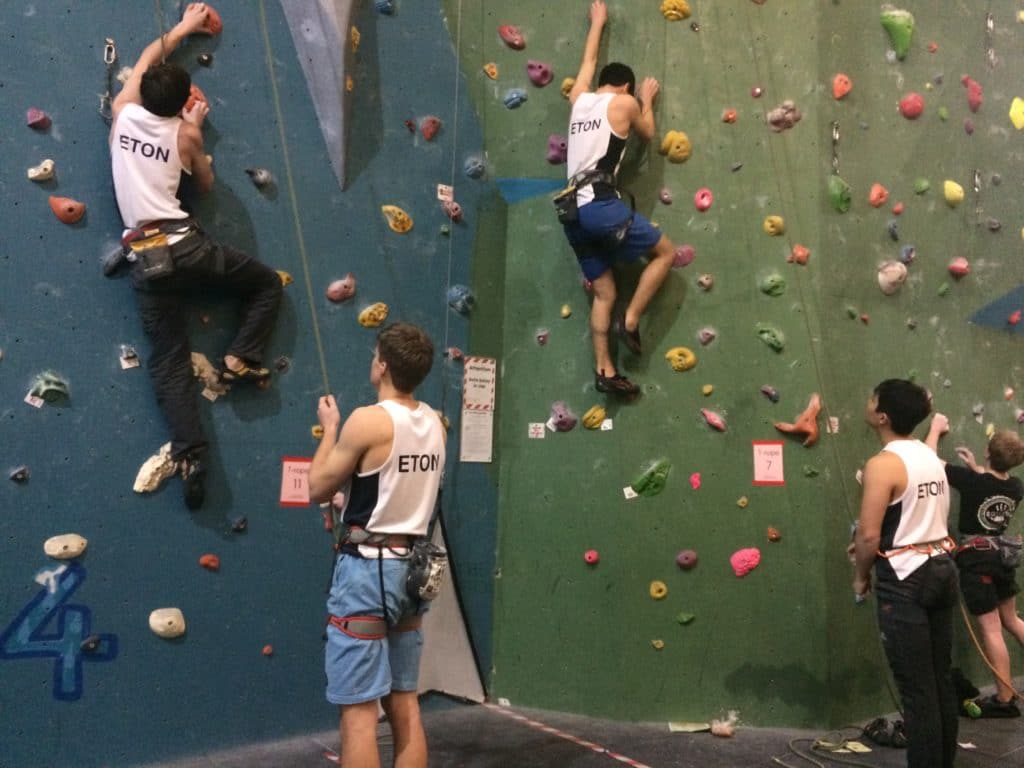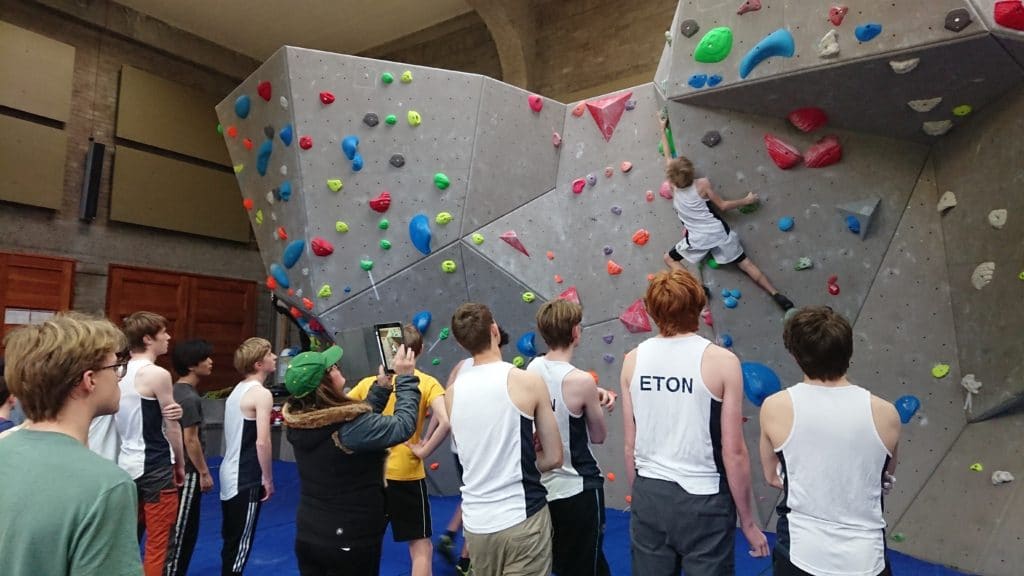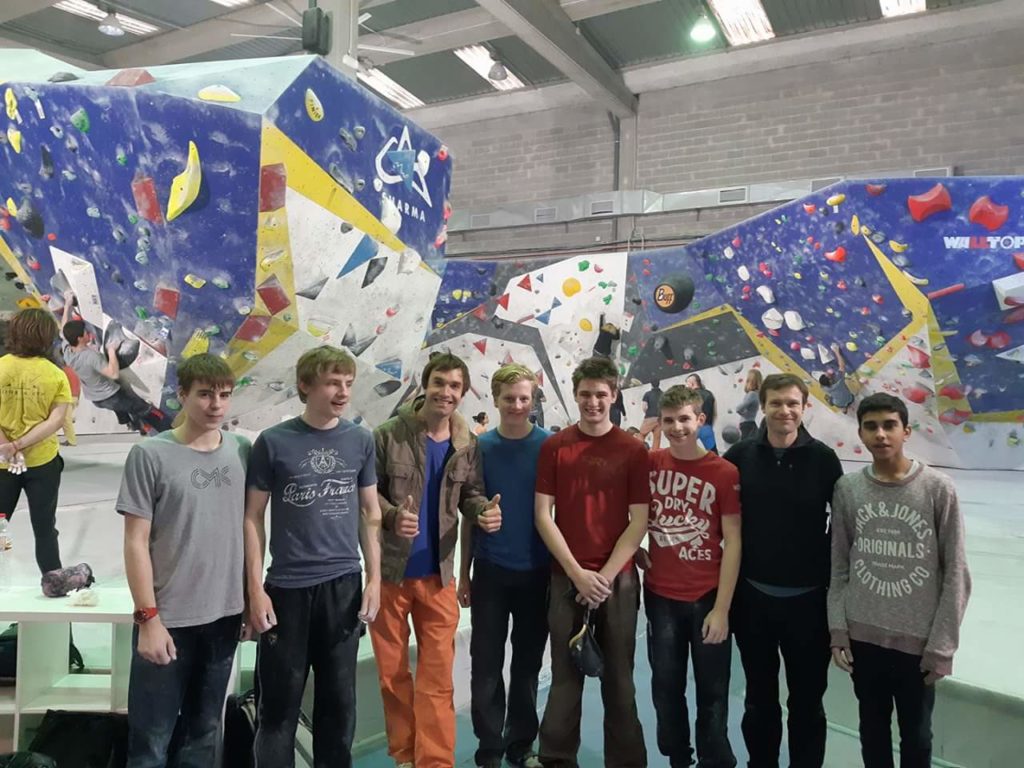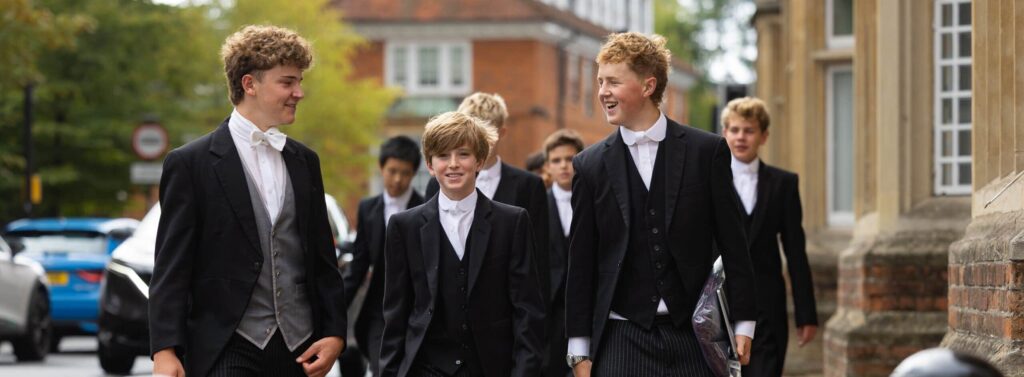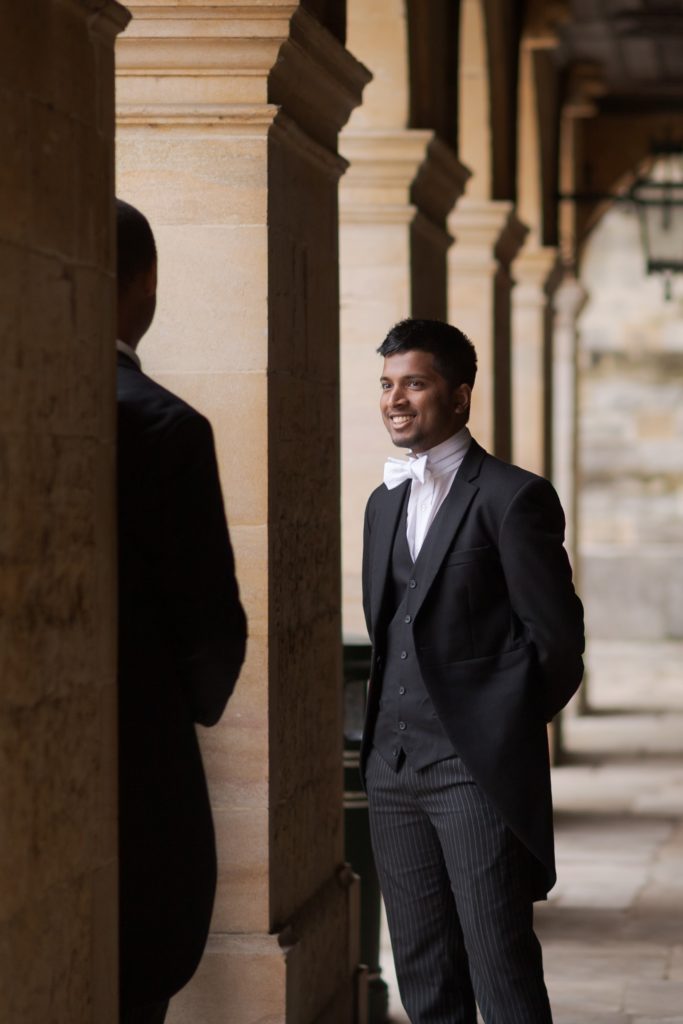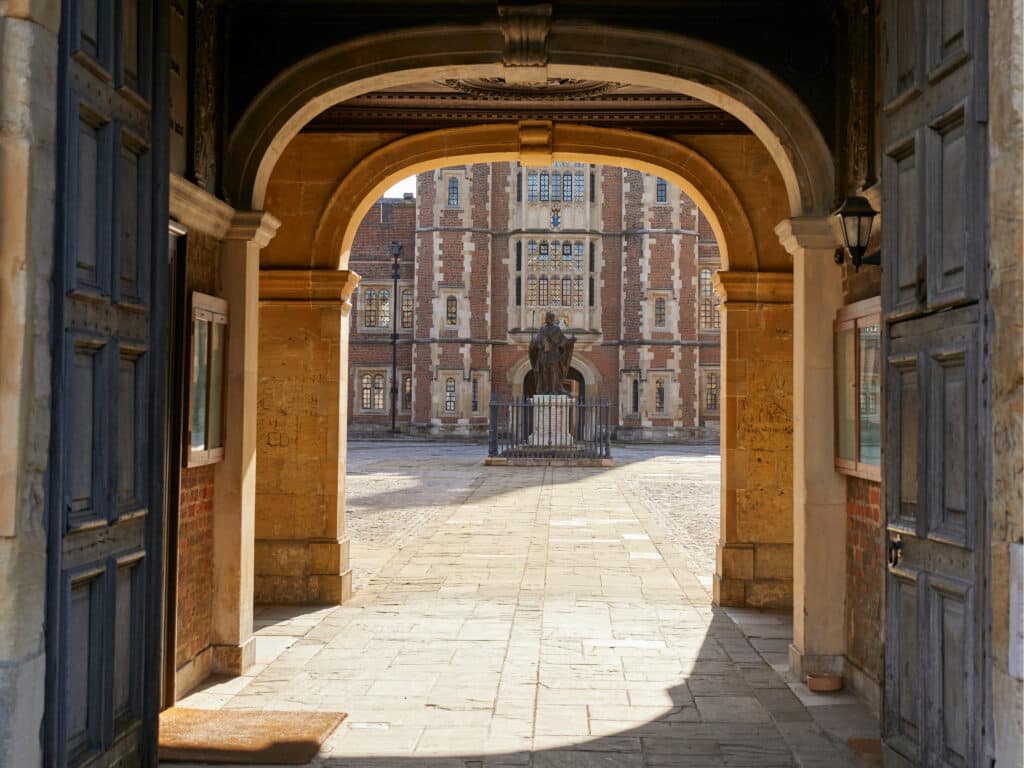Year 12 climber and recent gold-medal ‘speed climbing’ winner at the Independent Schools Climbing Championship, Oscar M tells the Press Office about his passion.
Climbing is one of the lesser-known activities at Eton; however, we have a small community of enthusiastic pupils who enjoy the sport year-round. As a new addition to the 2020 Tokyo Olympics, the sport has gained popularity worldwide and within the school.
There is always room for interested and enthusiastic climbers to get involved with the sport in school. We currently have a community of around 20 pupils who climb, with between 10-15 pupils attending every session.
The thing that I like most about the sport at school is the attitude and friendliness of the boys who climb; the community is very welcoming and the boys are always happy to be there.
Climbing takes place two to three times each week at school, all year round. Although we have a climbing wall at school, we prefer to go to external centres nearby to climb and access equipment and coaching.
The centres we frequently train at are in Reading, Amersham, Harrow and Bracknell and we leave at lunch time and are back by 5pm on the short days.
When you start climbing, you will have coaches and instructors at the centres that we visit who will teach you the safety and technique needed to get going with the sport. As you progress, you will have more opportunities to train and climb independently.
As a team we also compete in competitions and tournaments. One of the schools we are closest with is Westminster, and we have friendly competitions with them often.
Climbing is generally divided into three subcategories that we train and compete in. In the recent Olympics and the climbing world cups, the competitors compete in these three categories. Speed climbing is quite self explanatory: you race up a wall and the winner has the fastest time! Lead climbing is where you use safety equipment (a harness and rope) and climb a route on a tall wall of around 15m, clipping your rope into safety points in the wall as you go. This style requires good stamina as some routes can be very long, and is my personal favourite style since it replicates classic outdoor climbing the closest. Finally, bouldering is the type of climbing that is low to the ground (up to 4m) with only safety mats and no ropes. This style often involves shorter, more technical and more powerful routes.
Climbing competitions score the three categories I outlined above. As a school we recently attended the Independent Schools Climbing Competition, where 100-120 students from schools around the country competed at a day-long event.
The last time this competition was held, in 2019, we won overall, and this time around managed to keep the trophy by winning again! We won Gold in speed and bouldering, and Silver in lead, granting us the victory overall. We also competed against Westminster earlier this half in a friendly competition.
Although the vast majority of climbing at school is indoor during training sessions, we have held climbing trips and are planning one for this coming October abroad. In the past we have gone to Catalonia in Spain, and France, to climb, and this year we are hoping to go to Kalmnos or Leonidio in Greece.
We are also looking forward to a new climbing facility in the school grounds when the second stage of the sports facilities are completed.
